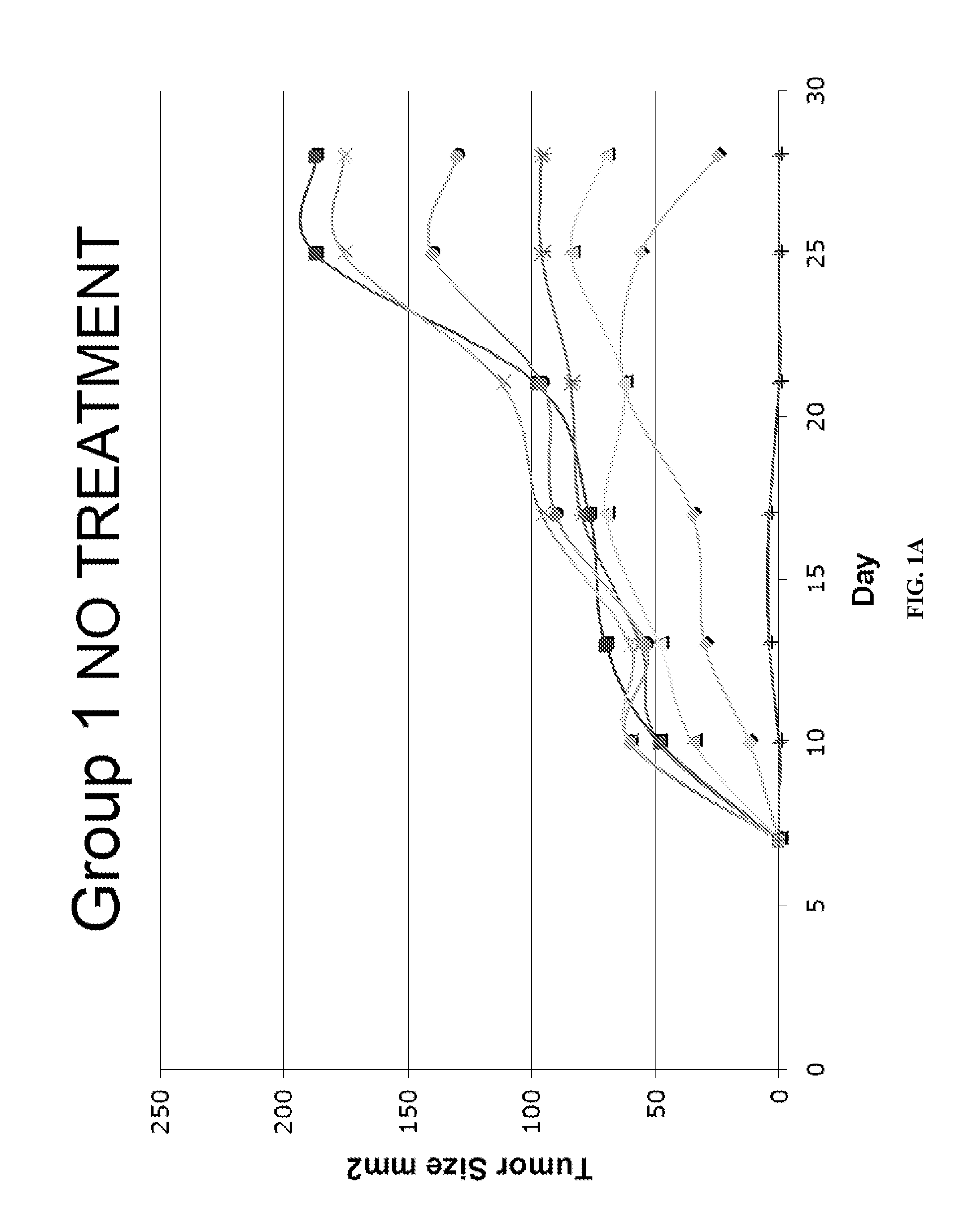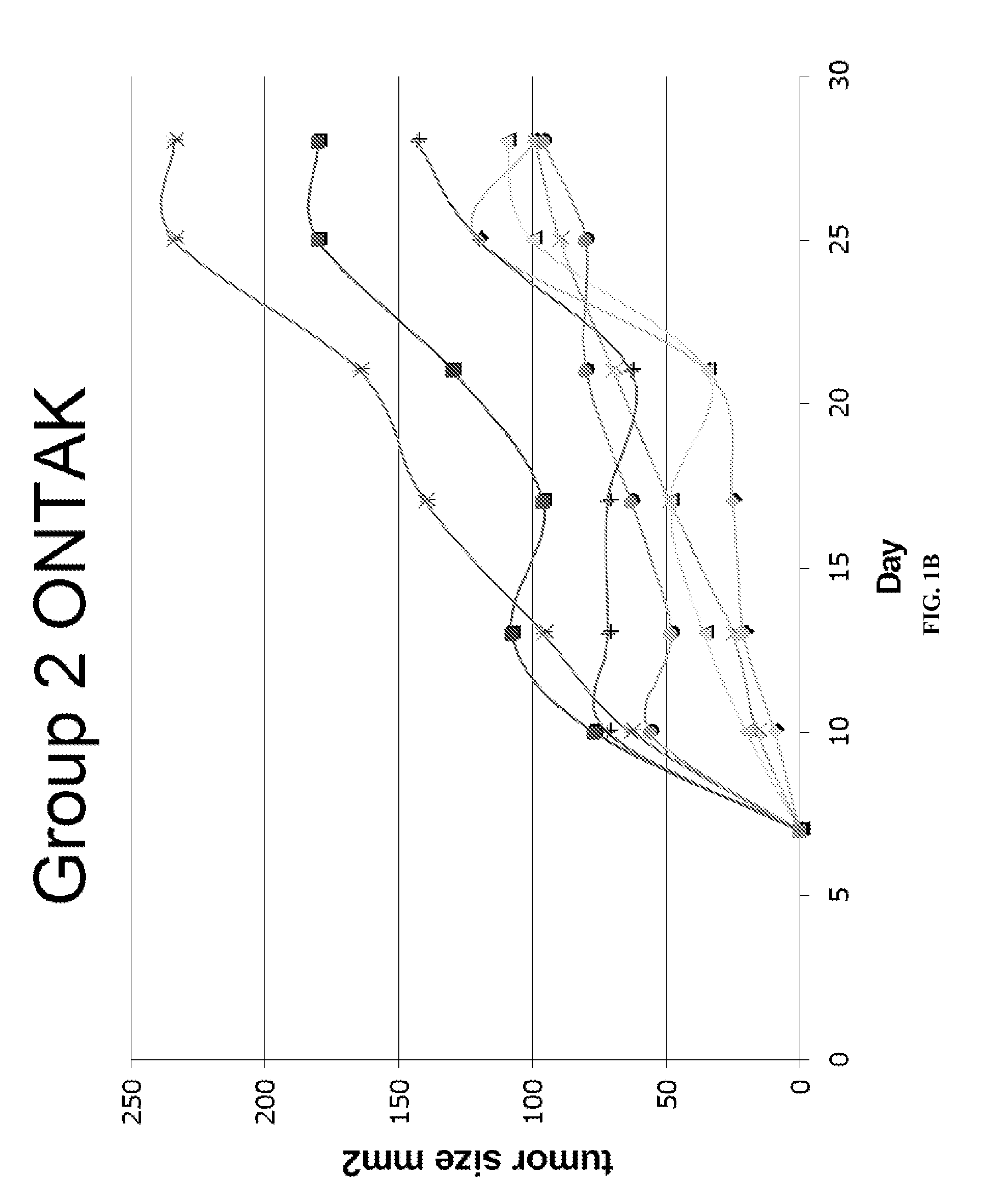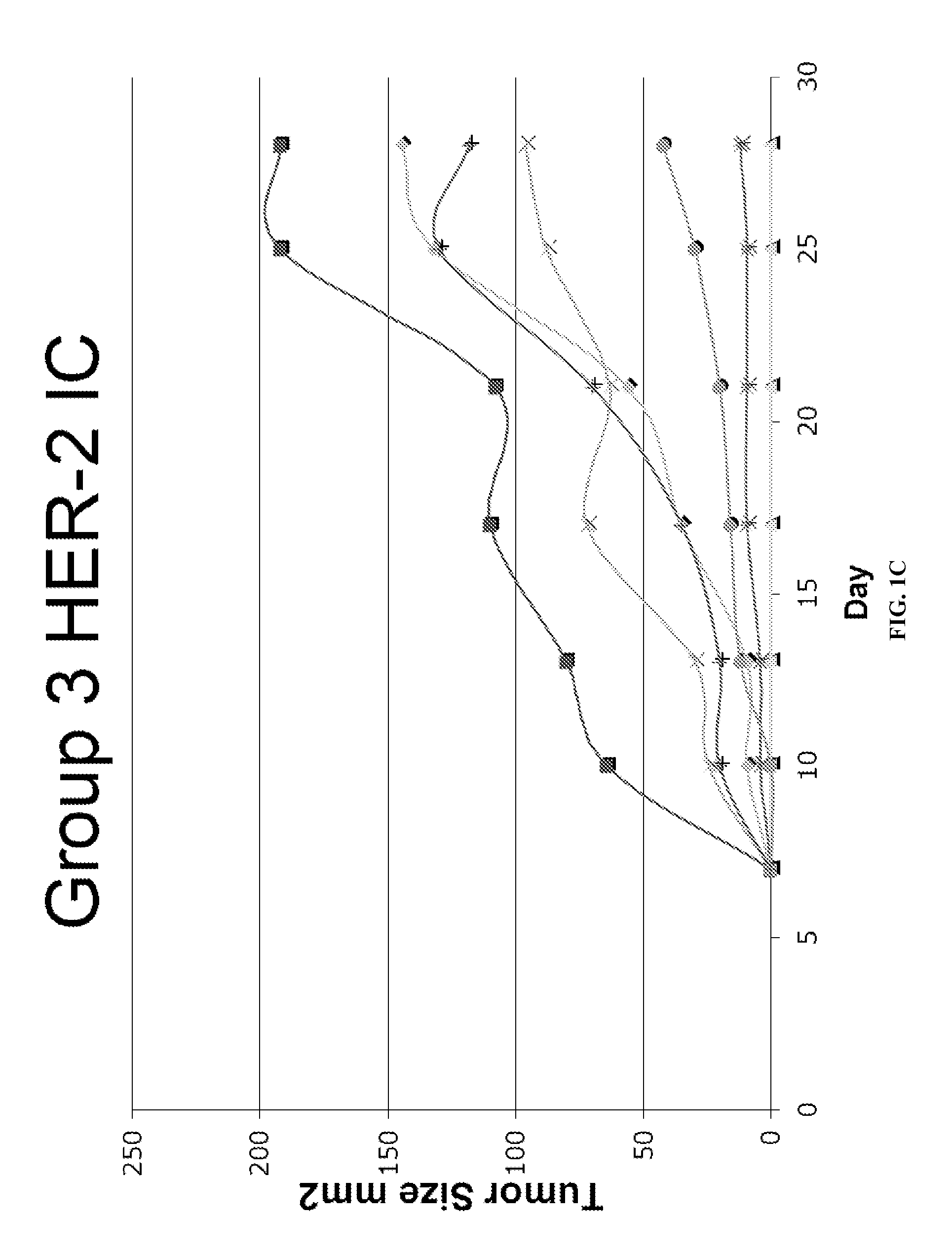Methods for converting or inducing protective immunity
a protective immunity and conversion technology, applied in the field of conversion or induction of protective immunity, can solve the problems of insufficient administration of therapeutic antibodies alone, the formation of soluble tumor antigen-containing immune complexes, and the inability to induce active, so as to reduce the activity or function of a regulatory t, increase the formation of immune complexes or immune complexes, and reduce the effect of regulatory t activity or function
- Summary
- Abstract
- Description
- Claims
- Application Information
AI Technical Summary
Benefits of technology
Problems solved by technology
Method used
Image
Examples
example 1
Experimental Design
[0165]FVB mice were immunized with HER-2 containing immune complexes (ICs which contain both HER-2 protein and rabbit polyclonal anti-HER-2 IgGs) either with or without prior regulatory T cell inhibition with ONTAK:
MiceDays −17 / −15Days −14 / −7Day 0Group 1——FVB HER-2 tumor challenge(NT2.4 cells)Group 2ONTAK i.p.—FVB HER-2 tumor challenge(NT2.4 cells)Group 3—HER-2 ICs i.vFVB HER-2 tumor challenge(NT2.4 cells)Group 4ONTAK i.p.HER-2 ICs i.vFVB HER-2 tumor challenge(NT2.4 cells)
[0166]Significant inhibition of tumor growth was seen in Group 4, while there was limited or no protection in Groups 2 or 3 (FIG. 1). Group 1 served as the control.
[0167]Therapeutic responses correlated with the induction of HER-2 specific CD4 and CD8 responses, but not humoral antibody responses, suggesting that the protective mechanism was mediated by the induction of a tumor-specific T cell response. Thus, tumor protection and T cell responses in a HER-2 tumor antigen model system showed that ...
example 2
[0168]To demonstrate that protection was due to an induced T cell response, splenic populations were obtained from immunized mice. Splenocytes were stimulated with either whole Her-2 protein for assessment of CD4 HER-2 specific T cell responses or instead stimulated with a Class I-restricted HER-2 peptide to assess CD8 Her-2 specific responses. After overnight incubation with antigen, T cells were assessed flow cytometrically for IFN-γ production, a cytokine produced by effector CD8 and Th1-type CD4 cells.
[0169]HER-2 Specific CD8 Responses:
[0170]Splenocytes from immunized mice were stimulated with and MHC-I restricted HER-2 peptide overnight and stained for intracellular production of IFN-γ. CD8 cells from mice treated with either ONTAK alone or HER-2 ICs alone demonstrated marginally enhanced IFN-γ production but this did not reach statistical significance (FIG. 2A; Group 1 vs. 2, p=0.2, Group 1 vs. 3, p=0.08). Mice immunized with both HER-2 ICs and ONTAK induced significantly enha...
example 3
[0173]Inhibition of regulatory T cells augments vaccine induced effector T cell responses. Antibody:antigen containing immune complexes greatly augment antigen presentation and expansion of antigen-specific CD4 and CD8 cells. Combining the administration of anti-tumor antibodies (or tumor antigen immune complexes) with the inhibition of T regulatory cells can be shown in mouse models to enhance anti-tumor immunity, wherein regulatory T cell inhibition prior to administration of anti-tumor antibodies can be employed.
[0174]Vaccination of mice with immune complex loaded dendritic cells can induce tumor immunity (Rafiq et al., (2002) J Clin Investig, 110(1):71-9). However, direct immunization of mice with immune complexes fails to induce tumor responses despite triggering impressive expansion of antigen specific T cells. Lack of induction of effector T cell immunity may be due to the coincident induction of regulatory T cell responses.
[0175]In the B16 melanoma model, the antibody TA99 r...
PUM
| Property | Measurement | Unit |
|---|---|---|
| Surface | aaaaa | aaaaa |
| Toxicity | aaaaa | aaaaa |
| Antigenicity | aaaaa | aaaaa |
Abstract
Description
Claims
Application Information
 Login to View More
Login to View More - R&D
- Intellectual Property
- Life Sciences
- Materials
- Tech Scout
- Unparalleled Data Quality
- Higher Quality Content
- 60% Fewer Hallucinations
Browse by: Latest US Patents, China's latest patents, Technical Efficacy Thesaurus, Application Domain, Technology Topic, Popular Technical Reports.
© 2025 PatSnap. All rights reserved.Legal|Privacy policy|Modern Slavery Act Transparency Statement|Sitemap|About US| Contact US: help@patsnap.com



